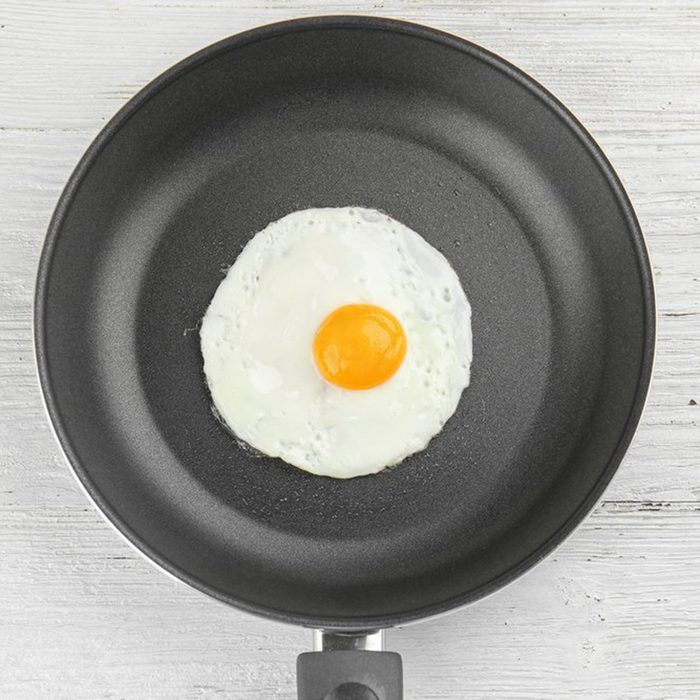
Eggs
“Eggs almost always contain salmonella,” says Kantha Shelke, Ph.D., a food scientist and principal of Corvus Blue LLC, a food science and research firm. The methods commonly used to cook eggs use gentle heat for a short duration of time, which doesn’t kill the bacteria. And leaving them at room temperature for any length of time is a recipe for those bacteria to multiply to harmful levels. Plus, eggs always taste better fresh and don’t take too long to scramble, so they’re probably not a food you want to save for later. Here are 60 egg recipes that are so good, there won’t be any leftovers.
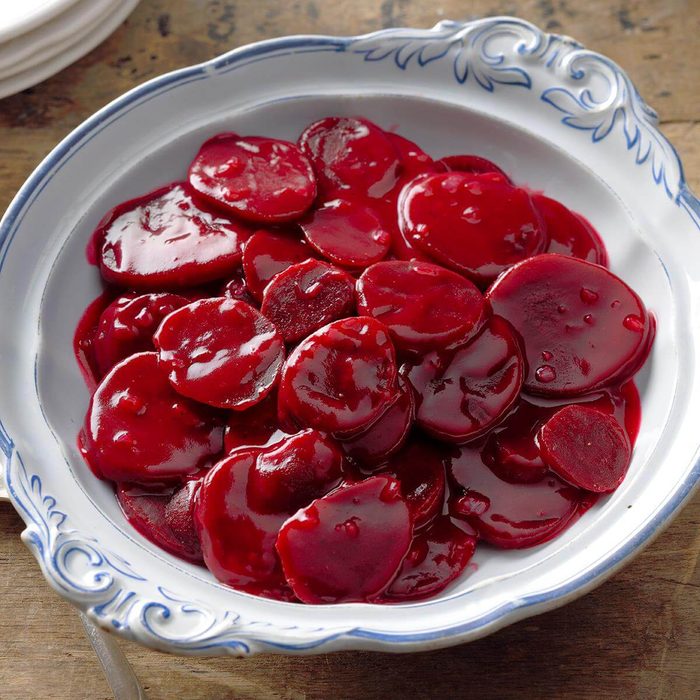
Beets
Research has found that the nitric oxide in these scarlet root veggies can give your workout a boost and may help blood pressure. But those same compounds react with heat badly. “If cooked, nitrate-rich foods are not cooled properly and further reheated, the nitrates can get converted to nitrites, and then to nitrosamines, some of which are known to be carcinogenic,” Shelke says. So regularly eating reheated beets or beet products (also turnips) may up your risk for certain cancers. By the way, here is the best way to prep and cook beets.
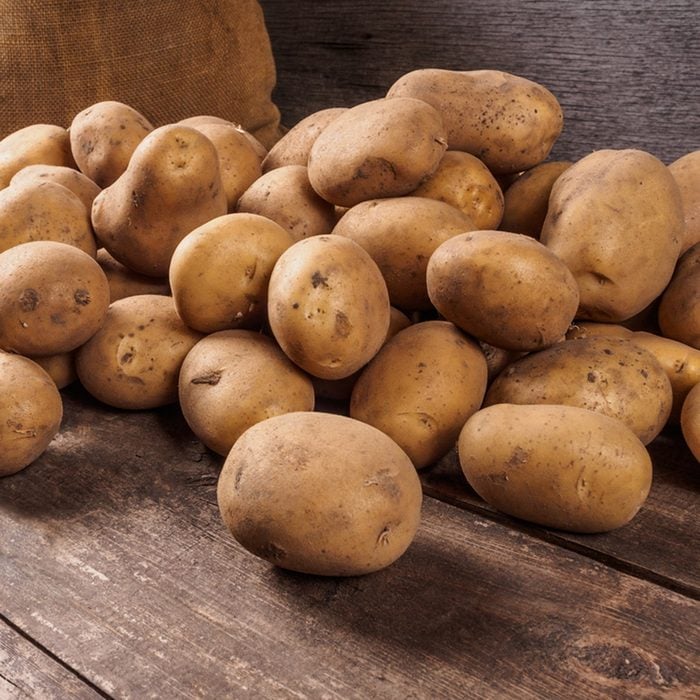
Potatoes
Spuds seem so sturdy, but even though they’re cooked hotter and longer than eggs, they suffer a similar fate when left to cool at room temperature too long. Doing so can potentially foster the growth of Clostridium botulinum, the bacteria that causes botulism, says Shelke. Particularly at risk, she says, are large, foil-wrapped baked potatoes, which offer the bacteria the ideal low-oxygen environment to thrive in. Zapping them (sans foil of course) for 30 to 60 seconds cannot kill the stuff that will wreak havoc on your GI system. But cooking a raw potato in the microwave only requires a few minutes more, so when you can, go that route rather than risking it. Don’t miss the foods that food safety experts will never eat.
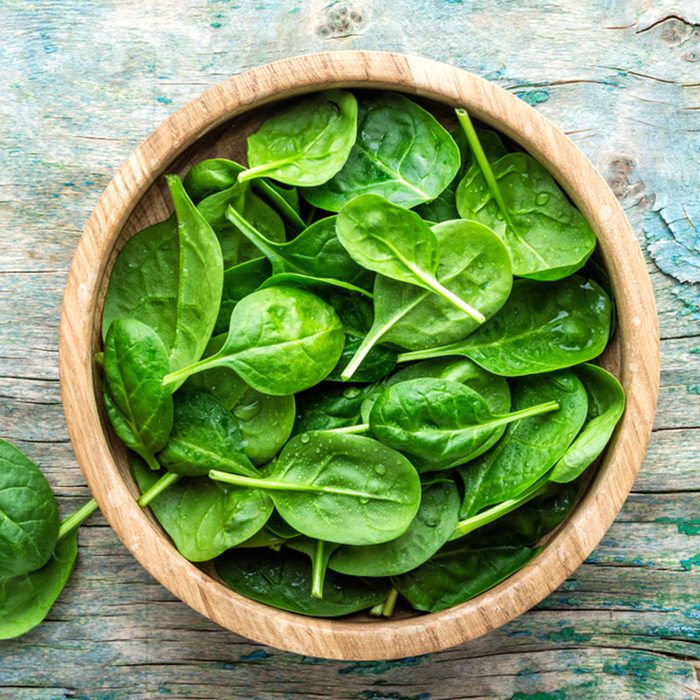
Spinach
Like beets, spinach is another nitrate-rich food that’s often served cooked. To avoid converting nitrates in these leafy greens into potentially carcinogenic nitrosamines, you may want to serve your spinach raw (the ultimate time saver) or lightly sautéed. It’s also important to note that nitrites, another byproduct of heating nitrate-rich foods, are not safe for infants less than six months old. Spinach is often mixed with other foods in baby purees, so make sure you aren’t heating them.
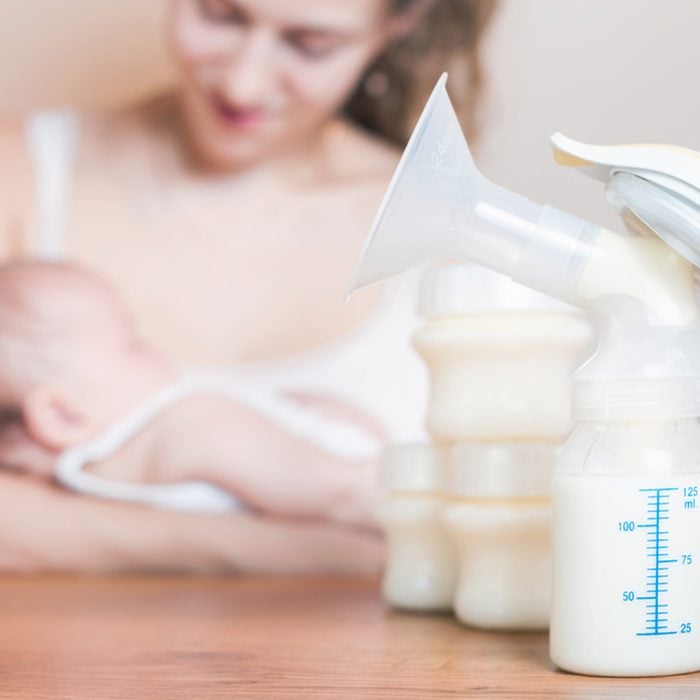
Breast milk
This all-natural substance is one of the healthiest things you can feed your infant—but warming it up is a big no-no. “Babies contaminate the bottle when they suck and the milk can be a breeding ground for the bacteria in the saliva,” Shelke says. “Neither microwaving nor warming can kill these bacteria which can cause distress to more than just the digestive system of the infant.”
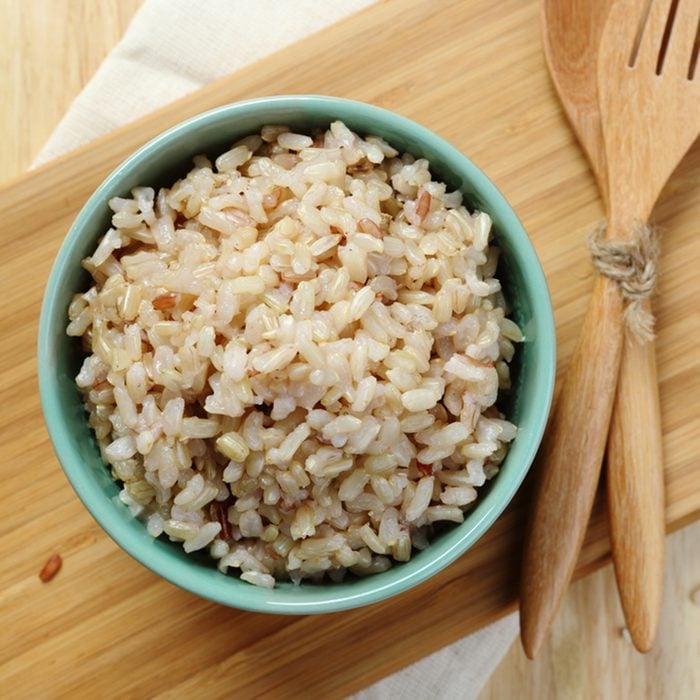
Rice
In the 1970s, a number of food poisoning outbreaks associated with fried rice from Chinese restaurants led to increased awareness that rice harbors a microorganism called Bacillus cereus that multiplies at room temperature. That doesn’t mean you have to chuck all your uneaten takeout though—just make sure you’re stashing it in the fridge quickly. In general, food safety guidelines recommend keeping foods hot (over 140°F) or cold (40°F or under) if you’re not eating it within two hours. Find out the foods you should never keep in your pantry.

Chicken
Like eggs, chicken tends to come standard with salmonella, and time plus low temps is a recipe for disaster as those bacteria multiply. The best way to avoid this: Make sure the internal temperature of your bird reaches 165 degrees. Microwaves don’t always heat evenly or to as high a degree as other cooking methods, so turning the meat and making sure the entire thing is hot helps. And don’t reheat it more than once—there’s always chicken salad! On the flip side, here are 25 recipes that are made completely in the microwave.
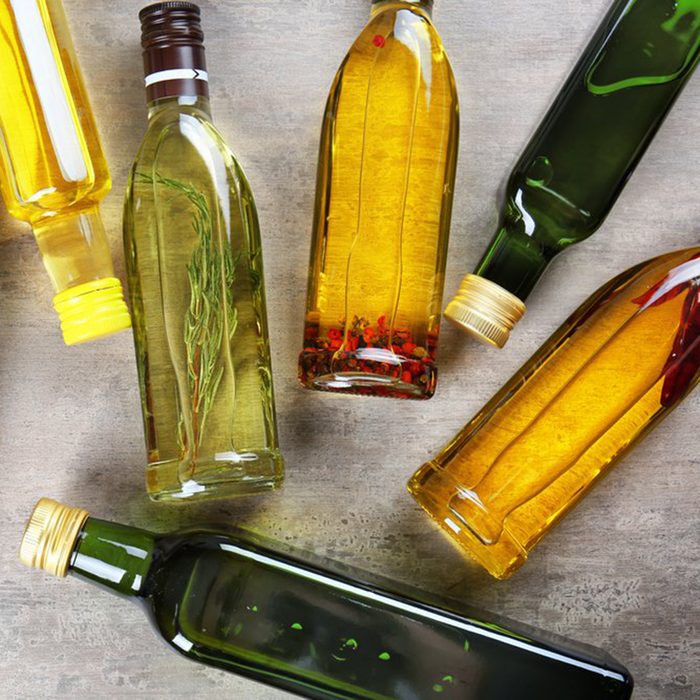
Cold-pressed oils
Flaxseed oil, olive oil, canola oil and other seed oils are rich in omega-3 fats and other unsaturated fats, which have a number of health benefits. Alas, they are also very sensitive to temperature. “Heating and reheating foods containing these oils can render them unstable and rancid and therefore, not safe,” Shelke says. Find out the best cooking oil to use for each type of cooking.
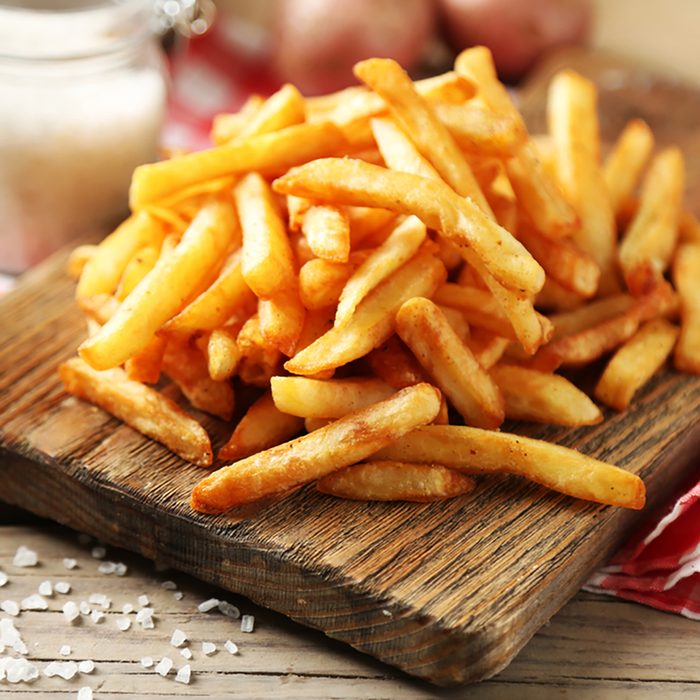
Oily foods
Another reason to avoid reheating oily foods, like French fries? Exceeding the smoke point of the oil not only reduces the oil’s nutritional properties, but research has also found that the smoke that is released contains hazardous fumes with toxins including free radicals, the same compounds that contribute to disease and aging at a cellular level.
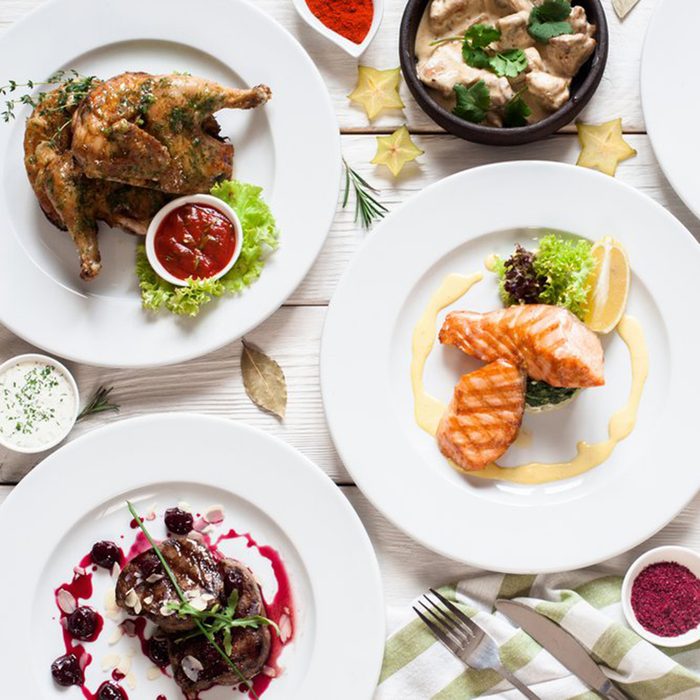
Buffet food
There’s a reason buffets don’t let you take food to go, and it’s not just about making money. Buffet trays aren’t kept hot enough to kill microbes, which can grow to unhealthy amounts while they sit out, unrefrigerated, says Shelke. This goes for buffet-style restaurants and home buffets at parties. Check out these 10 things you shouldn’t touch at buffets.
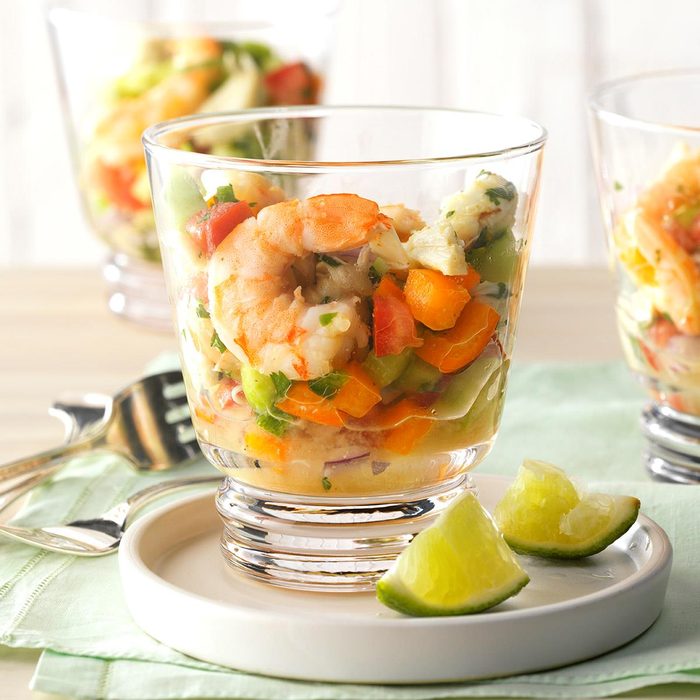
Seafood
Fresh fish is very healthy and we don’t eat enough, but nothing says food poisoning risk like bad seafood. And according to the FDA, it can go bad pretty easily—bacteria grows quickly on any seafood that isn’t kept between 40 and 140 degrees Fahrenheit. Even the ambient temperature in the room can affect it, so to be safe, don’t let seafood sit out more than one hour. And really, unless you want to annoy your co-workers or roommates, you might not want to reheat this in a communal microwave anyway.
